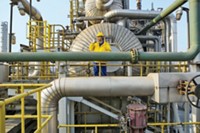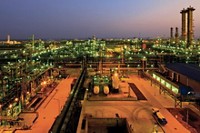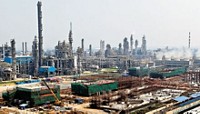Advertisement
Grab your lab coat. Let's get started
Welcome!
Welcome!
Create an account below to get 6 C&EN articles per month, receive newsletters and more - all free.
It seems this is your first time logging in online. Please enter the following information to continue.
As an ACS member you automatically get access to this site. All we need is few more details to create your reading experience.
Not you? Sign in with a different account.
Not you? Sign in with a different account.
ERROR 1
ERROR 1
ERROR 2
ERROR 2
ERROR 2
ERROR 2
ERROR 2
Password and Confirm password must match.
If you have an ACS member number, please enter it here so we can link this account to your membership. (optional)
ERROR 2
ACS values your privacy. By submitting your information, you are gaining access to C&EN and subscribing to our weekly newsletter. We use the information you provide to make your reading experience better, and we will never sell your data to third party members.
Business
Rivals Team Up For Basic Silicon Production
by Jean-François Tremblay
October 2, 2006
| A version of this story appeared in
Volume 84, Issue 40
China
Polysilicon for solar cell manufacturing is not the only hot topic in silicon chemistry these days.
On a sunny day in September, Peter-Alexander Wacker and Stephanie Burns, the chief executive officers of Wacker Chemie and Dow Corning, respectively, stood together in their best suits for the groundbreaking of their Chinese silicon chemicals project. The alliance had been in the works for years.
The two companies are putting $600 million on the ground in Zhangjiagang, a midsized city on the Yangtze River, two hours by car from Shanghai. They will build two facilities making silicon-based materials. One is a siloxane plant that is due to be fully operational in 2010 and the other a fumed silica plant that will start production at the end of next year. The siloxane plant will start producing some material next year to feed the silica plant.
Siloxanes are basic materials that can be polymerized into hundreds of industrial and consumer silicone products. Fumed silica acts as a filling material in the making of silicone elastomers. It is also a widely used viscosity-adjusting agent. Dow Corning will provide the technology for the siloxane plant, and Wacker that for the fumed silica facility. The two companies will buy most of the output of both plants to feed existing or future downstream operations in China.
Speaking with reporters at the event, the Wacker CEO said his company had initiated the talks with Dow Corning that led to their partnership. He said Wacker had a basic concept in mind, and the two companies quickly agreed to team up. In the three years that followed, the two firms engaged in detailed planning and sought government approvals for the project, Wacker said.
Dow Corning and Wacker already operate two siloxane plants apiece. Both of Wacker's plants are in Germany, whereas Dow Corning has one in the U.S. and one in the U.K. The derivative plants that will be fed by the new siloxane facility will be operated separately by Wacker and Dow Corning.
That the siloxane plant will serve the Chinese market alone marks a change in thinking at Dow Corning. Ten years ago, the company had initiated the process of searching for a suitable site for an Asian siloxane plant that would serve the whole region. China was one of three countries where it might have been built, the others being Malaysia and South Korea. In her comments to reporters, Burns said the rapid growth of the Chinese market is the main reason that the new siloxane plant will serve China only. Underscoring China's importance to Dow Corning, Chris Bowyer, an executive vice president who is the company's second-most-senior manager, moved to Shanghai earlier this the year. A few years ago, Dow Corning's most senior executives in Asia were based in Tokyo.
Bowyer told C&EN that he moved from the U.S. to China to keep closer tabs on changes in the local market. He said his presence has also expedited negotiations with government officials over the setup of the Zhangjiagang project. As to why it took so long for Dow Corning to finally move on the long-considered Asian plant, he said, "The time is right." He added he's confident that the facility will provide the proper amount of silicon to the market, with neither shortages nor oversupply.





Join the conversation
Contact the reporter
Submit a Letter to the Editor for publication
Engage with us on Twitter